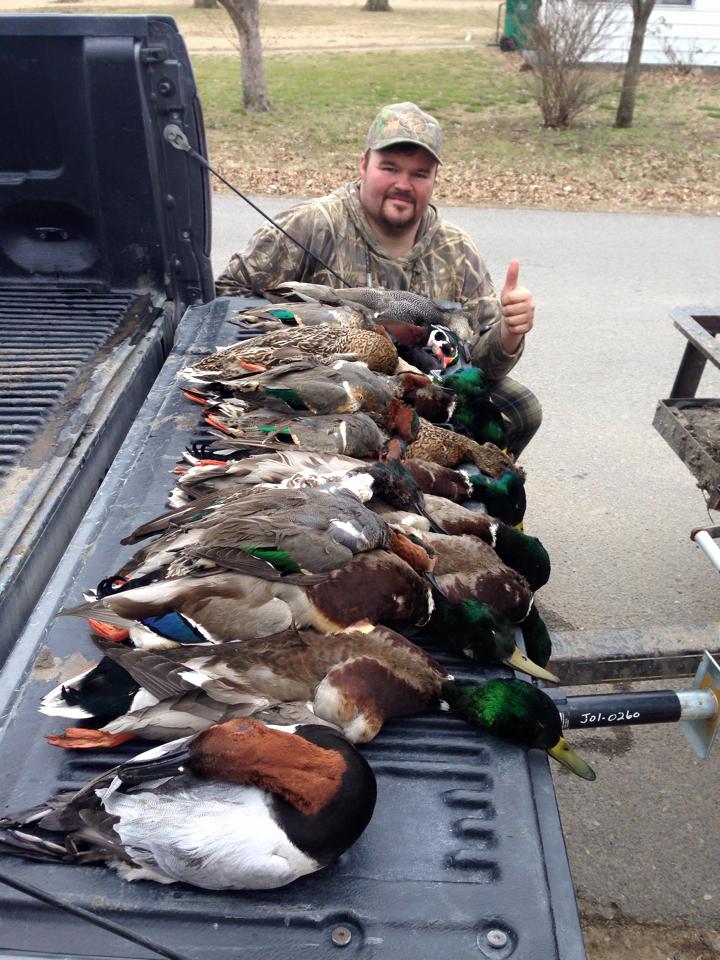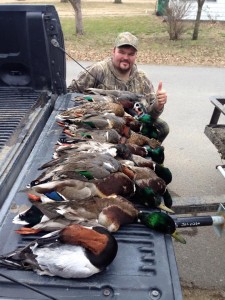The Order Begins, Crappie Report

Well folks the Grizzly Jig Spring Tackle Show has come and gone, and I was honored to meet so many people who read this column both online and in the area newspapers. One gentleman came up and introduced himself and said, “Hey I really enjoy your column, and thank God you finally put that boy of yours on a deer!” I thanked him and began to give some of the details of the hunt, and he quickly cut me off and said, “Now do you think you could get back to giving a decent fishing report!?” Yes sir, yes sir I can!
Duck season went out with a bang and I saw a lot of wader-laden water-fowlers posting pictures of rows of mallard ducks, accompanied by camo-vested retrievers and their grinning owners. Outside of a late youth season in West Tennessee, the only migrating “V’s” anyone will be blasting in the next month will belong to snow geese, which has become big business in our neck of the woods.
“The Order”, referring to the late and liberal snow goose season, begins on Feb. 1st and runs through April 30th in Missouri, and Feb. 8th through Mar. 10th in Tennessee. The United States Fish and Wildlife Service started the “Snow Goose Conservation Order” back in 1999, and the conservation departments of most states have been working with them to dramatically decrease the ballooning snow goose population, and I’m happy to help! There are no limits on snows in Missouri, and 20 per day in Tennessee, and both allow you to remove the plug from your shotgun and insert a clip if you’d like! The geese are multiplying faster than their breeding habitat in the Arctic Tundra can handle, so thinning out the population is for their own good.
Getting these big, white birds to decoy is pretty difficult, so in the past I’ve preferred driving around until I find a large flock and stalking them, which although effective and something I’ve done since I was a kid, is quite exhausting. My good friends and waterfowl specialists the Boden brothers of IDHP Outfitters have joined other outfitters in figuring out what it takes to get these birds to come to you, as opposed to you going to them.
The trick is a massive, active spread of decoys. The Boden’s hunt over 2,000 flags, 250 full-bodies, a couple small vortex machines, a huge contraption that swings 24 flying goose decoys in a tornadic motion, and a half dozen other flapping and flying doo-hickeys that I can’t recall. This seems pretty tiring to set up, and it probably is, which is why I show up right before daylight! To show up like I do and enjoy the fruits of their labor, and get in on an amazing hunt and experience, call David Boden at 573-318-4097 or Jaime Boden at 573-275-3633, I guarantee a great time!
Although snow’s are called “sky carp” by many, they can be good table fare if they’re prepared right. Just treat them like a big, Mississippi River catfish. Cut the breasts up into square-inch chunks, and submerge in salt water. Keep them in the refrigerator, changing the water five or six times over a 24 hour period. After “purging” them, you can cook them any way you like and they turn out pretty good. Personally, I prefer them bacon-wrapped and barbequed!
Now on to something that needs no purging! Crappie are biting everywhere right now, and outside of an alleged (I was told by mostly reliable sources) massive shad-kill on lower Kentucky Lake, which makes the fishing very tough until the gamefish have cleaned out the shad, every lake in the region is producing slabs.
My home lake in Northwest Tennessee, Reelfoot, is always good in the winter. While I was doing a Q&A seminar with the rest of the Grizzly Jig Pro Staff over the weekend, I heard the same questions reiterated that I’ve been hearing, have the asian carp killed the lake? The answer is absolutely not! There is no killing this lake, nor is there any chance of over-fishing it. All lakes run in cycles, and in smaller, shallow-water basin lakes like Reelfoot the ups and downs in the cycle are more extreme. Crappie live 5-6 years on average unless they’re harvested, and there is no doubt that we lost a couple spawns a few years back due to falling waters. One female crappie lays 250,000 eggs, and it only takes a few good spawns to get back to normal, which I believe we had last year and the year before. Another indication of the crappie population rebounding, are the pictures I saw over the weekend from friends of mine who have been catching big, white crappie spider-rigging in shallow water, and I’m extremely close to joining them!

